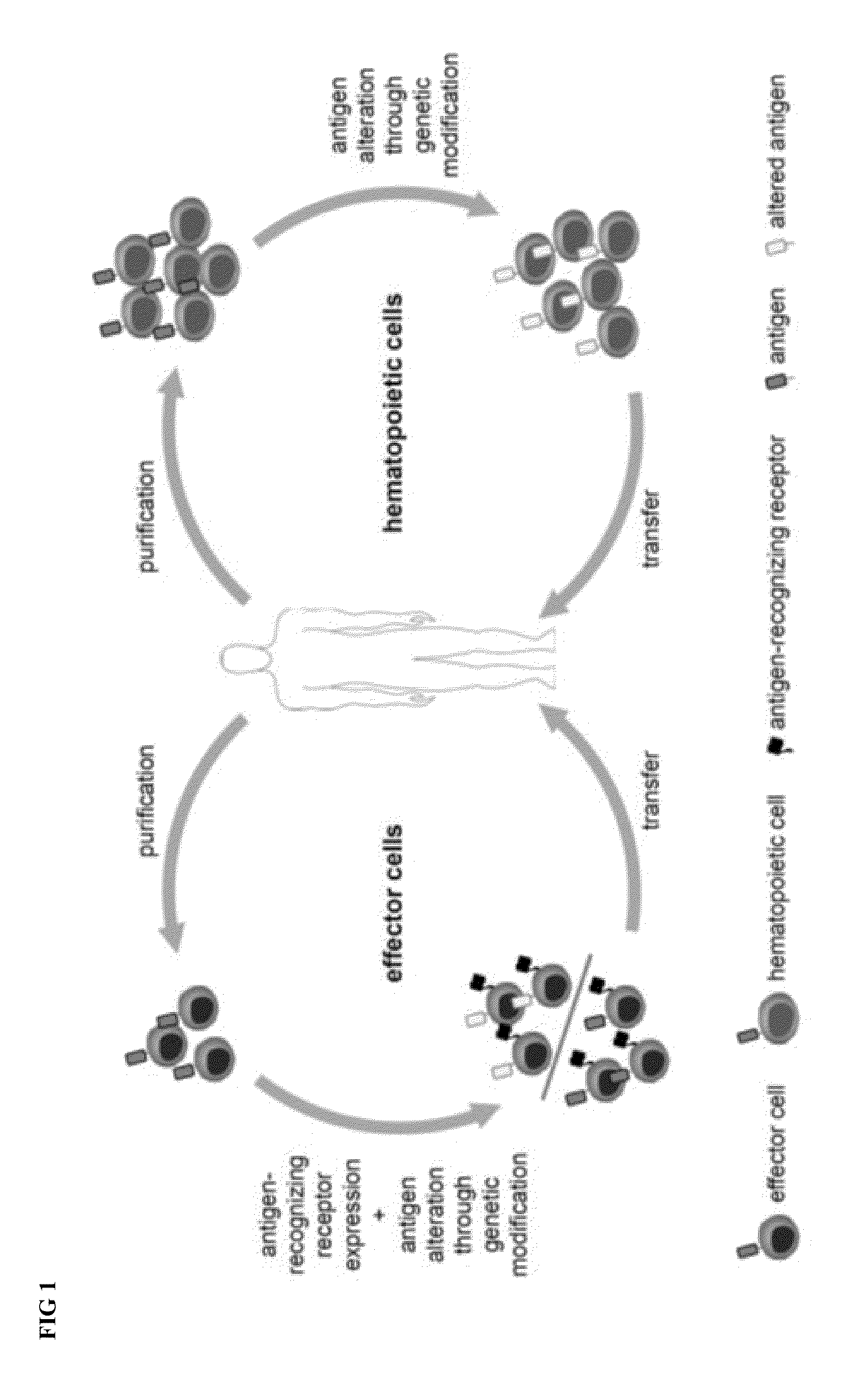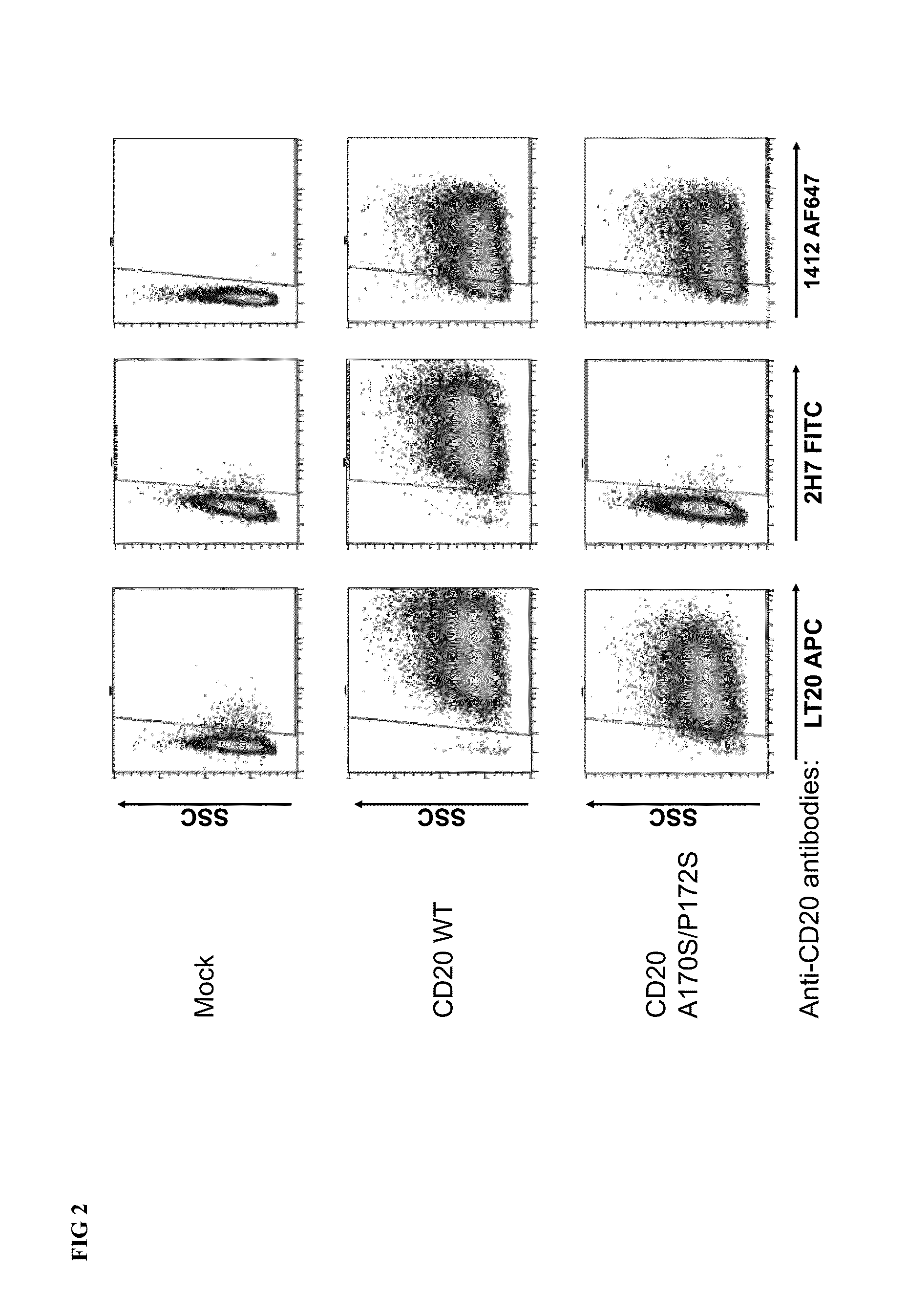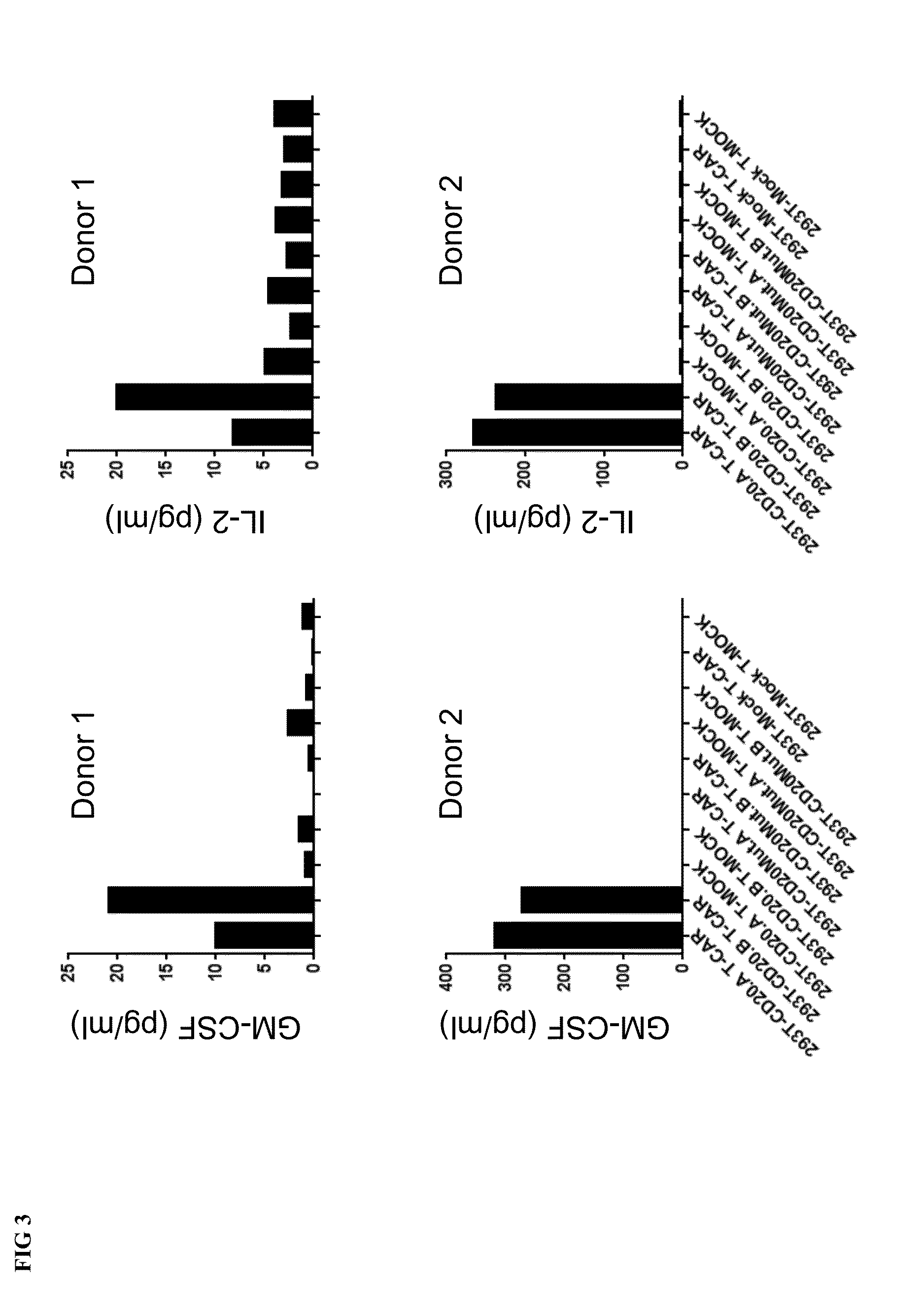Combination immunotherapy of antigen-recognizing receptors and hematopoietic cells for the treatment of diseases
a technology of hematopoietic cells and immunotherapy, which is applied in the field of diseases, can solve the problems of serious side effects or even death, disease relapse, and damage to healthy tissues, and achieve the effect of reducing the side effects of antigen-recognizing receptors
- Summary
- Abstract
- Description
- Claims
- Application Information
AI Technical Summary
Benefits of technology
Problems solved by technology
Method used
Image
Examples
embodiments
[0050]In one embodiment of the invention the antigen-recognizing receptor in the present method or system for reducing side-effects of an antigen-recognizing receptor against antigen-expressing non target cells is a CAR, which is expressed on an immune effector cell, preferentially on a T cell. Methods for purification and generating immune effector cells engineered to express a CAR are well known in the art. Immune effector cells, preferentially T cells can be obtained from a variety of sources including but not restricted to peripheral blood mononuclear cells (PBMCs), leukapheresis or bone marrow samples. For enrichment of these cells methods well known in the art can be used such as centrifugation through a Ficoll™ or PERCOLL™ gradient or positive / negative selection techniques such as fluorescent sorting (e.g. FACS) or magnetic sorting (e.g. MACS®). In one embodiment T cells obtained from an individual are magnetically labelled, for example with a magnetic bead coupled to antibod...
example 1
Targeting the CD20 Antigen with a CD20-Recognizing CAR Expressed in T Cells where 2 Amino Acids of the Wild Type CD20 Antigen have been Mutated to Abrogate CD20 Recognition by the Antigen Recognizing Receptor
[0117]In a first instance we have used HEK 293 T cells to overexpress several variants of the human CD20 antigen (the sequences were synthesized by DNA 2.0 and cloned into the plasmid pMACS LNGFR-IRES of Miltenyi Biotec). FIG. 2 shows how mutations of amino acids A into S at position 170 and P into S at positions 172 of the wild type human CD20 antigen (SEQ ID NO:3) abrogate binding of the anti-CD20 antibody clone 2H7.
[0118]A CAR encoding the antigen-recognizing receptor of the 2H7 (see SEQ ID NO 1 and 2) with an IgG1 extracellular spacer, a CD8 transmembrane and an intracellular signaling domain of 4-1BB-CD3 zeta was generated and cloned into a lentiviral vector (provided by Lentigen Technology, Inc., USA). Human T cells were activated with MACS GMP TransAct kit (Miltenyi Biote...
example 2
Use of an Antigen Recognizing Receptor to Target an Antigen Present on the Majority of Haematopoietic Cells Including T Cells
[0122]In this example we have taken advantage of the polymorphism of CD45 in mouse models. As indicated in FIG. 5, the amino acid differences guiding the polymorphism of CD45.1 and CD45.2 isoforms in C57BL / 6 mice is known. One can generate antibodies specifically recognizing the 2 isoforms separately. Such antibodies exist that recognize either the CD45.2 or the CD45.1 isoform of the mouse CD45 surface molecule. However, in this model it is unknown, which epitopes the existing antibodies recognize. We have therefore used plasmids encoding the sequence of three different mutants of the CD45.2 isoform or the wild type CD45.2 to force expression of said antigens in the HEK-293T cell line. As indicated in FIG. 6, mutation of the amino acid K in position 277 to E allows the anti-CD45.1 antibody to bind the antigen and abrogates the binding of anti-CD45.2 antibody. ...
PUM
| Property | Measurement | Unit |
|---|---|---|
| Electrical resistance | aaaaa | aaaaa |
Abstract
Description
Claims
Application Information
 Login to View More
Login to View More - R&D
- Intellectual Property
- Life Sciences
- Materials
- Tech Scout
- Unparalleled Data Quality
- Higher Quality Content
- 60% Fewer Hallucinations
Browse by: Latest US Patents, China's latest patents, Technical Efficacy Thesaurus, Application Domain, Technology Topic, Popular Technical Reports.
© 2025 PatSnap. All rights reserved.Legal|Privacy policy|Modern Slavery Act Transparency Statement|Sitemap|About US| Contact US: help@patsnap.com



